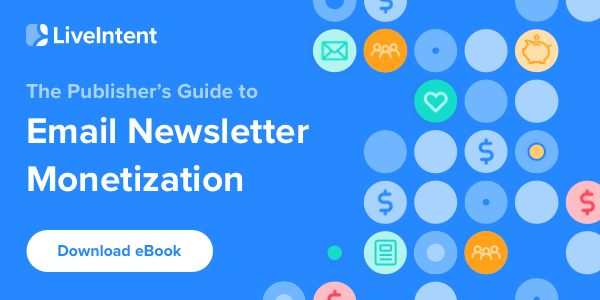 |
|||||||||||||||
|
|||||||||||||||
| Google's Privacy Sandbox Faces UK Probe |
 |
| There's long been a dark looming question hovering over Google's Privacy Sandbox as an alternative to third-party cookies, especially when it comes to whether the proposals in the Sandbox are set up to afford Google an unfair market advantage. We know all too well that without third-party cookies publishers' ad revenue will suffer greatly. But it's still unclear whether the Sandbox proposals will continue to tip the scales unjustly towards Google. With that in mind, the Competition and Markets Authority has decided to investigate that very thing. After receiving numerous complaints from publishers and tech companies, most notably Marketers for an Open Web (MOW), the CMA decided it was high time to take a closer look at Google's plan to replace the third-party cookie. James Rosewell, director of MOW, told Campaign "that Google was effectively acting like Goldfinger, the eponymous villain from the James Bond movie, by creating a 'Google-owned walled garden'." We talked to Roswell about his criticism of Google's power over the future of advertising when he previously approached the W3C about the tech giant wielding its browser dominance over everyone else in meetings that are convened to decide the future of the open web. Now his admonitions have pricked the ears of the UK regulatory body who will take a forward-look into a future process. This is an unprecedented move y'all. |
| While Google says they welcome the CMA's involvement and that privacy is of utmost concern as the industry builds the future of the open web, privacy is still a major issue when it comes to some of the privacy sandbox proposals, especially if the browser is allowed to have control over the bidstream data. It will be interesting to see how far the CMA takes their probe. What's happening in the UK, along with what's happening in the US antitrust cases against big tech will have a major bearing on how things shake out for the future of advertising for both buyers and sellers. Could it all be more bark than bite? We'll just have to wait and see. |
| Lots of Keyword Blocking Amid A Coup |
| Advertisers don't want to make the mistake of funding conspiracy theory or militia websites. Given all of the political turmoil last week, it was no surprise that advertisers pushed the pause button on advertising across media—on TV, social media, and even news sites. Throughout 2020, keyword blocking became the norm whether we were talking about COVID-19, BLM Protests, political misinformation, or a turbulent election, reputable news sites lost a lot of revenue while trying to provide the public with important information. Eventually, according to reports, most blocking subsided in December. But we saw a big return last week, as all hell broke loose in Washington, DC. Given that brands greatly benefit from advertising within news sites, maybe they should reconsider pumping the brakes like that every time a major news event occurs. |
| As AdMonsters Advisory Board Chairman Rob Beeler recently wrote: "It’s time for brands and publishers to look at brand safety together through the same lens." And it will take tools to bring about that level of transparency. That's why approaches like brand suitability sound promising. But brand suitability (similar to blocklisting) won't just work as a set-it-and-forget-it option. We've got our eye on DoubleVerify's recently launched Brand Suitability Tiers, that align with the Brand Safety Floor and Brand Suitability Framework advanced by the 4A’s Advertising Protection Bureau (APB) and World Federation of Advertisers (WFA) Global Alliance for Responsible Media (GARM), as a solution. The tool gives buyers control to consider content type alongside content topic so that they can maintain campaign scale while ensuring placement within trusted news environments. On the pub side, the tool promises to increase transparency by providing access to data and insights to analyze inventory and optimize campaign performance relative to suitability—during and after the sales process. If tools like DV's Tiers truly increases communication between the buy and sell sides by offering them a common language, perhaps we'll hear less about lost publisher revenue behind media quality issues and more about happy advertisers and publishers. Here's to hoping, right? |
| Just When Pubs Thought It Couldn't Get Any Harder... | ||
| At the end of 2020, Walgreens rolled out its own media network. The move follows an increasing trend with big brands, like Walmart, CVS, Target, Best Buy, and The Home Depot, entering the world of media publishing. This trend signals a significant shift in today's world—businesses recognize that to remain competitive, they must diversify revenue streams and center their strategies around their two greatest assets: audiences and first-party data. With brands taking a dip—or in some cases diving headfirst—in the publisher pool, it's getting a bit crowded. Publishers, too, must find new ways to remain competitive by leveraging their audiences and first-party data, especially as third-party cookies are phased-out. However, publishers don't need to reinvent the wheel to do so. Instead, publishers can leverage what's already at their disposal: their content. |
||
| Content is why audiences engage with publishers, and email newsletters are a powerful channel for distributing that content. But email can do a lot more than place content in front of readers. Publishers can open their email newsletters to third-party demand, transforming email from a distribution channel to a new revenue source. Monetization aside, email can also be a critical component to identity resolution when paired with the right tech. With third-party cookies on their way out, advertisers will look to publishers not only for their audiences but also for first-party data. With email, publishers can offer advertisers the opportunity to engage in people-based marketing outside of walled-gardens and without third-party cookies. The opportunity is ripe for publishers to activate and place their first-party data at the foundation of their monetization strategies. Doing so will lessen cookie-reliance and grow their first-party footprint keeping them competitive in a rapidly evolving landscape. |
||
|
||
 |
| What Else We've Been Reading |
|








